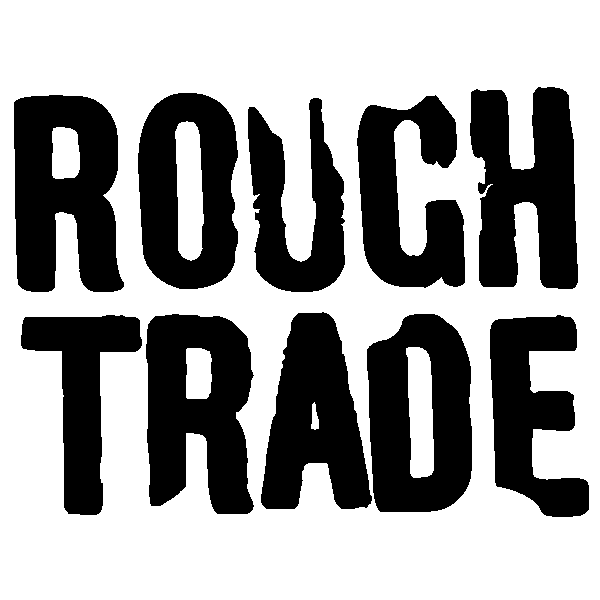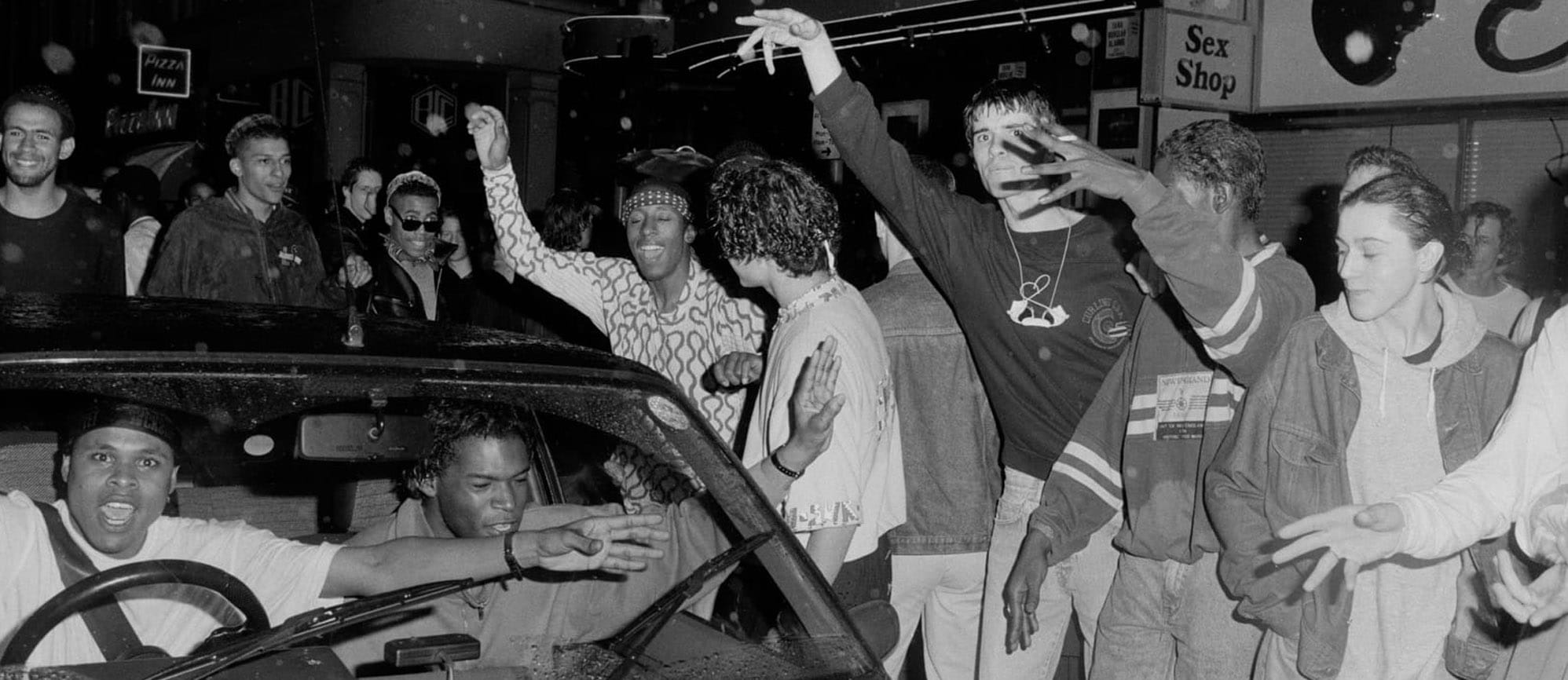Celebrating 40 years of London Fashion Week, we examine the enduring symbiotic relationship between grassroots music and fashion and its influence on the lifestyles and communities of young people in the UK capital.
Lead photo by Marcus Graham / Museum of Youth Culture
Expressing individuality is something London’s creative youth has excelled at for decades, with personal style choices, socio-political perspectives and fearless and rebellious attitudes informing the diverse artistic scenes that emerged to colour the capital’s rich history. In conjunction with London Fashion Week, with contribution from the Museum of Youth Culture and in support of the London Creates Music campaign, we shine a light on the art, resistance and resilience cultivated in live music venues and among the young musical pioneers ripping up the rulebook.
"For 40 years London Fashion Week has been the engine room of our trailblazing, rule breaking, world leading fashion industry. London is where generations of designer talent have burst onto the world stage and the capital is where you can discover the tastemakers of the future. In a fitting celebration of four decades, this City Wide Celebration will honour the dynamic interplay between fashion and grassroots music. London Creates Music x London Fashion Week will spotlight fantastic underground gigs across the capital, as we build a better London for everyone."
Justine Simons OBE, Deputy Mayor for Culture and the Creative Industries
From the glamorous fluidity of the New Romantics, the blissful hedonism of 90s rave culture, the skinny jean-clad indie sleaze of the noughties, the expansive cultural morphing of the 2010s to the hyperpop boom of the 2020s (brat summer might be over but its legacy is eternal), the relationship between music and fashion has long been a key player in the story of subculture in London. While living in one of the world’s most vibrant cities is a dream realised by many, it can be lonely, expensive and mentally tough to navigate. London’s independent music venues are sanctuaries of self-expression and offer, not only a wealth of accessible talent, but a found community of like minded young people.
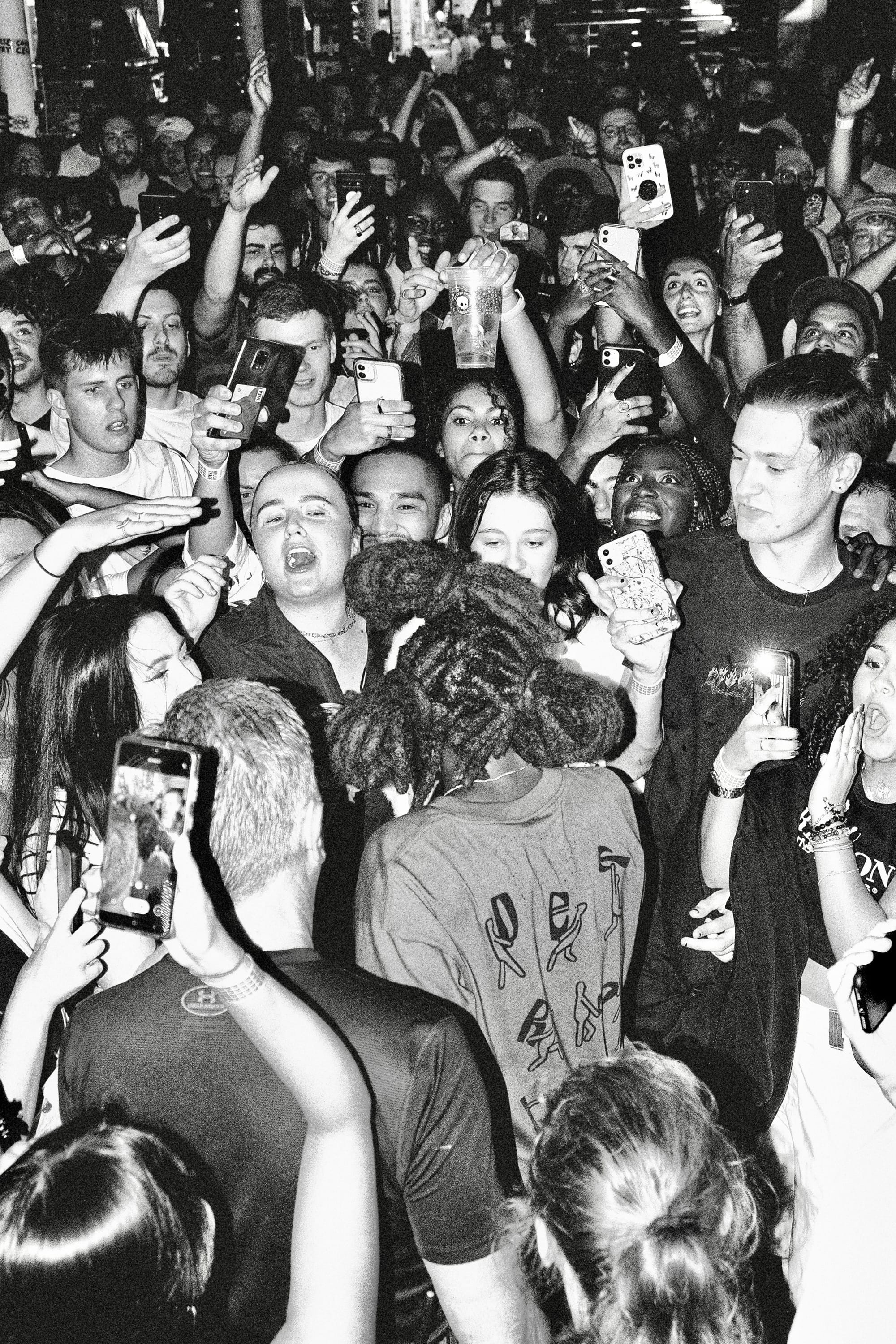

"We formed the band when we were still in college and sheepishly started to play open mics wherever we could, always dreaming of hitting it big time in our eyes on the Brixton Windmill's stage. Getting our first gig when we were definitely way too young to be there, we were introduced to a whole new world of misfits and weirdos alike who all embraced our janky art rock with open arms. Without realising it, we had tapped into a new world where unfinished art and unsure music was at the heart of how people functioned. From there we followed our favourite musicians around town, taking us to a whole sea of different venues, from the Safehouse and Montague Arms in Peckham, The Ivy House in Nunhead, DIY space in South Bermondsey and Vinyl Deptford (which later became Sister Midnight). Noone really cared about their appearance on and off stage, half the time it felt like people were just wearing what they had blind-picked out of their dad's wardrobe. We'd adopted a similar approach in that clothes were never that important to us and wearing whatever we felt comfortable in became part of the charm. Aesthetic only entered our brains when we started to release music into the world. We always wanted to work with artists that inspired us and would have extensive conversations with creative collaborators to form colourful scapes that visualised our music. Since then we've developed our aesthetic to have cohesion on all fronts, and love the way that it all feeds back in a cycle of inspiration."
Goat Girl
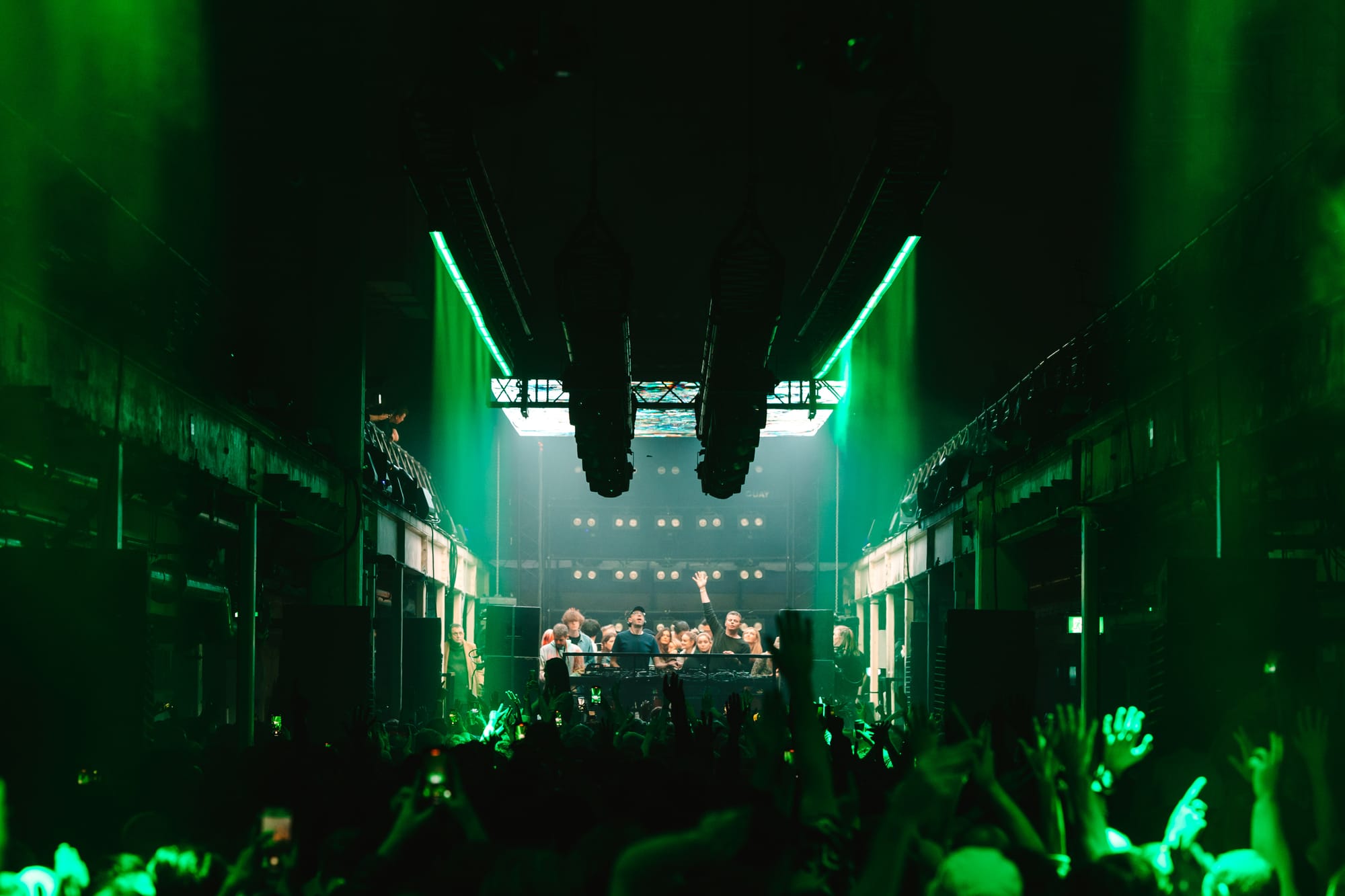
“There’s a real deep connection between the records we played and the spirit of the rooms at that time…whether it was Naked Under Leather (Manchester) or The Job Club (at Gossips, Soho). It bridged the gap between Manchester and meeting people in London. We first went to the Hacienda together in 1989 and witnessed the full democratic spirit of acid house...nights we were involved in like The Heavenly Social had that sense of democracy, of different types of people all mixing together without issue, all losing it.”
Ed Simons, The Chemical Brothers
While we look back on the aesthetics and sensibilities of London’s subcultures as moments in time, it’s important to remember that the scenes were not static. The constantly evolving ideas and behaviours helped to inspire and re-shape the experiences of the youth of the future, challenging outdated narratives and making space for new conversations. Indeed, much of the inclusivity and creative freedom we embrace today is the result of generations of young people choosing to resist societal norms. It’s therefore vital we continue to celebrate and support grassroots venues and the communities they serve, to champion young voices and usher in another 40 years as influential and transformative as the last.
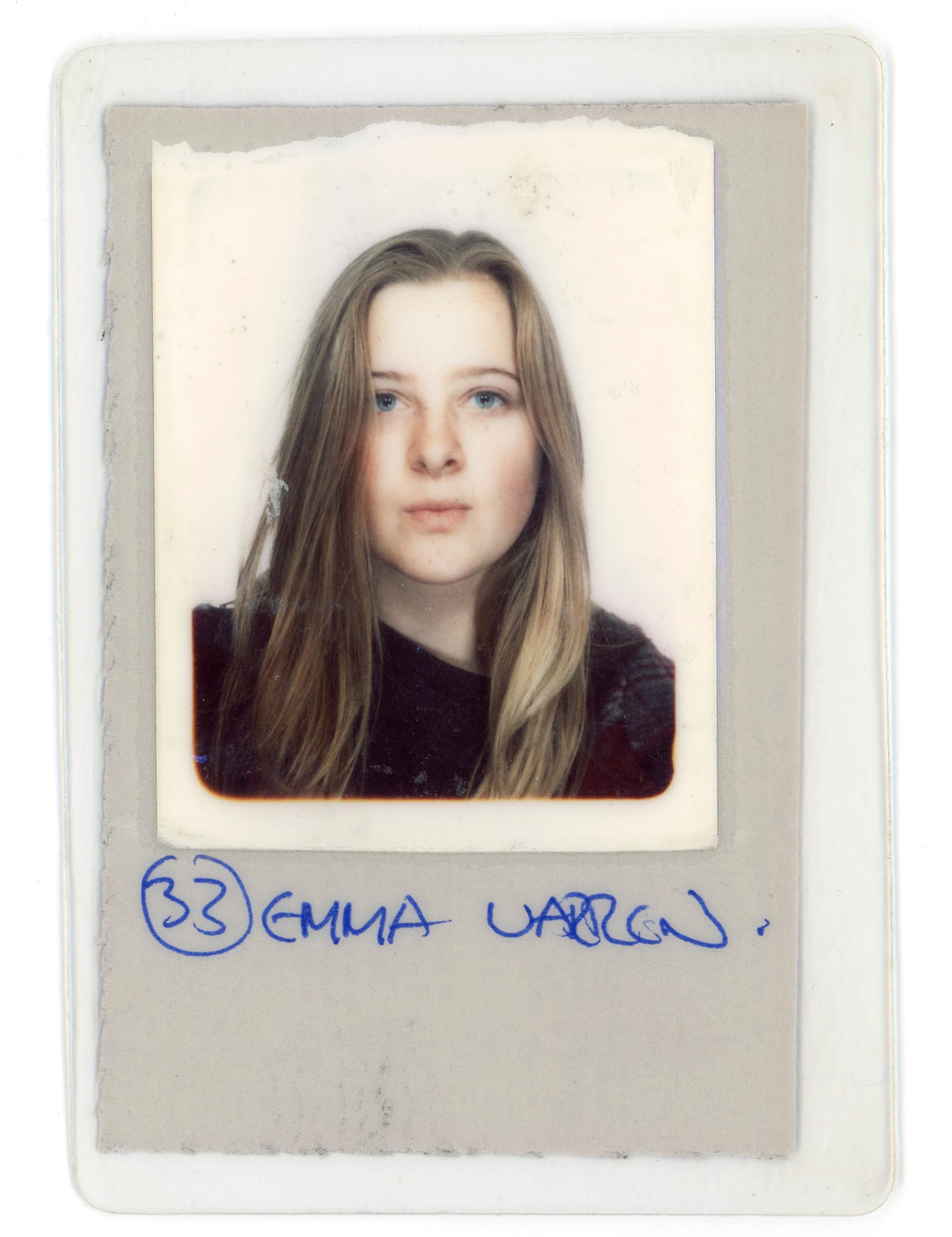
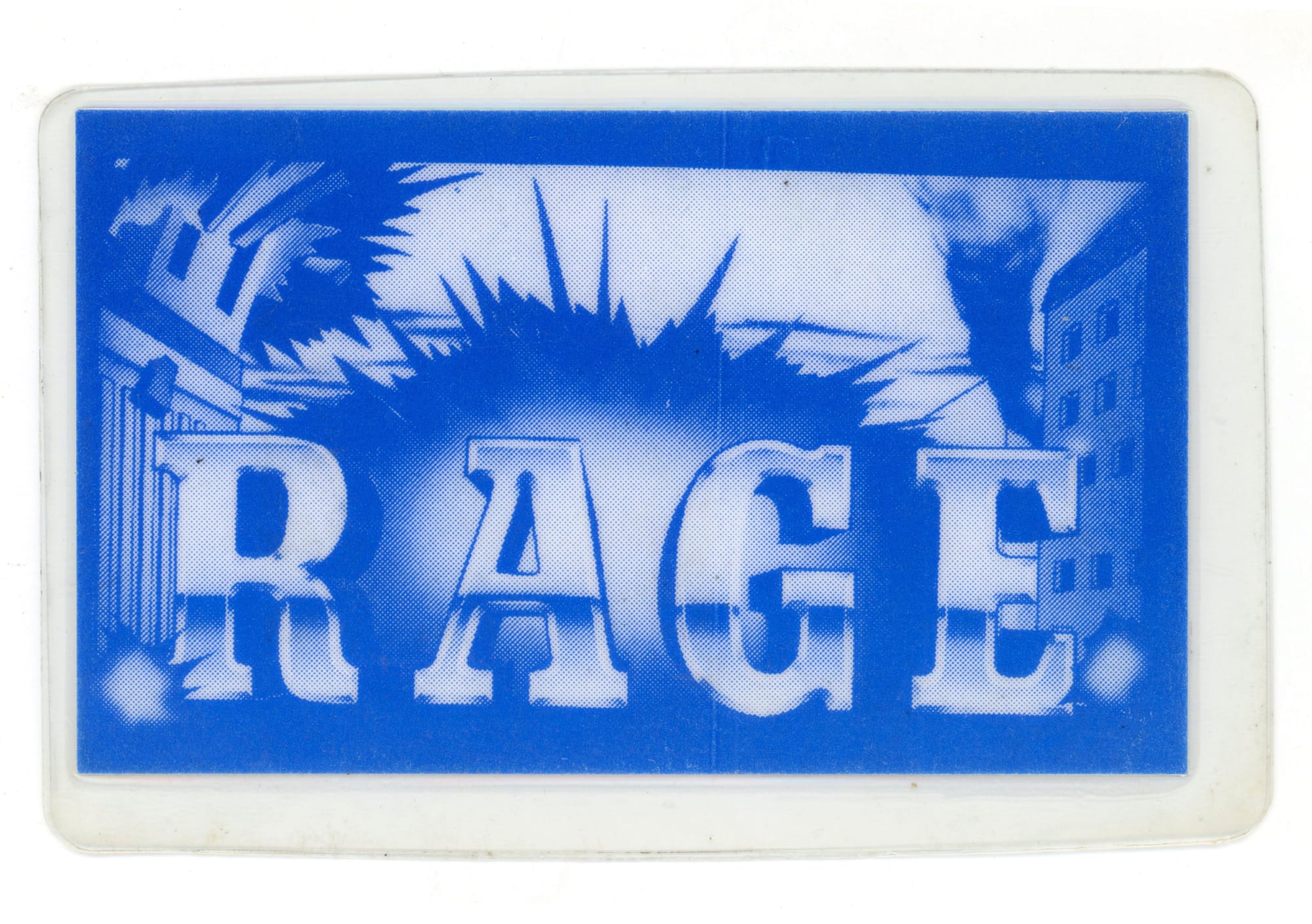
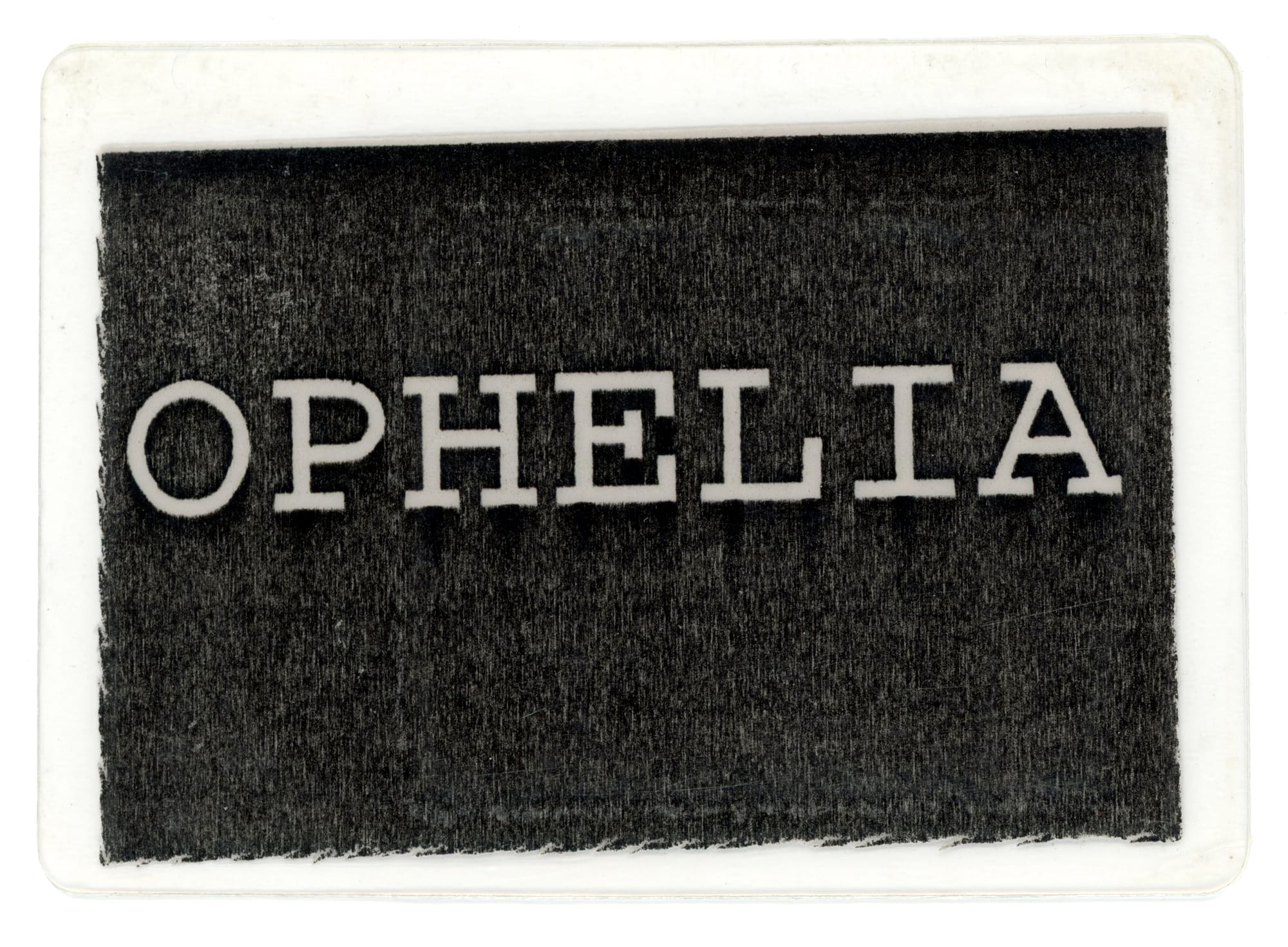
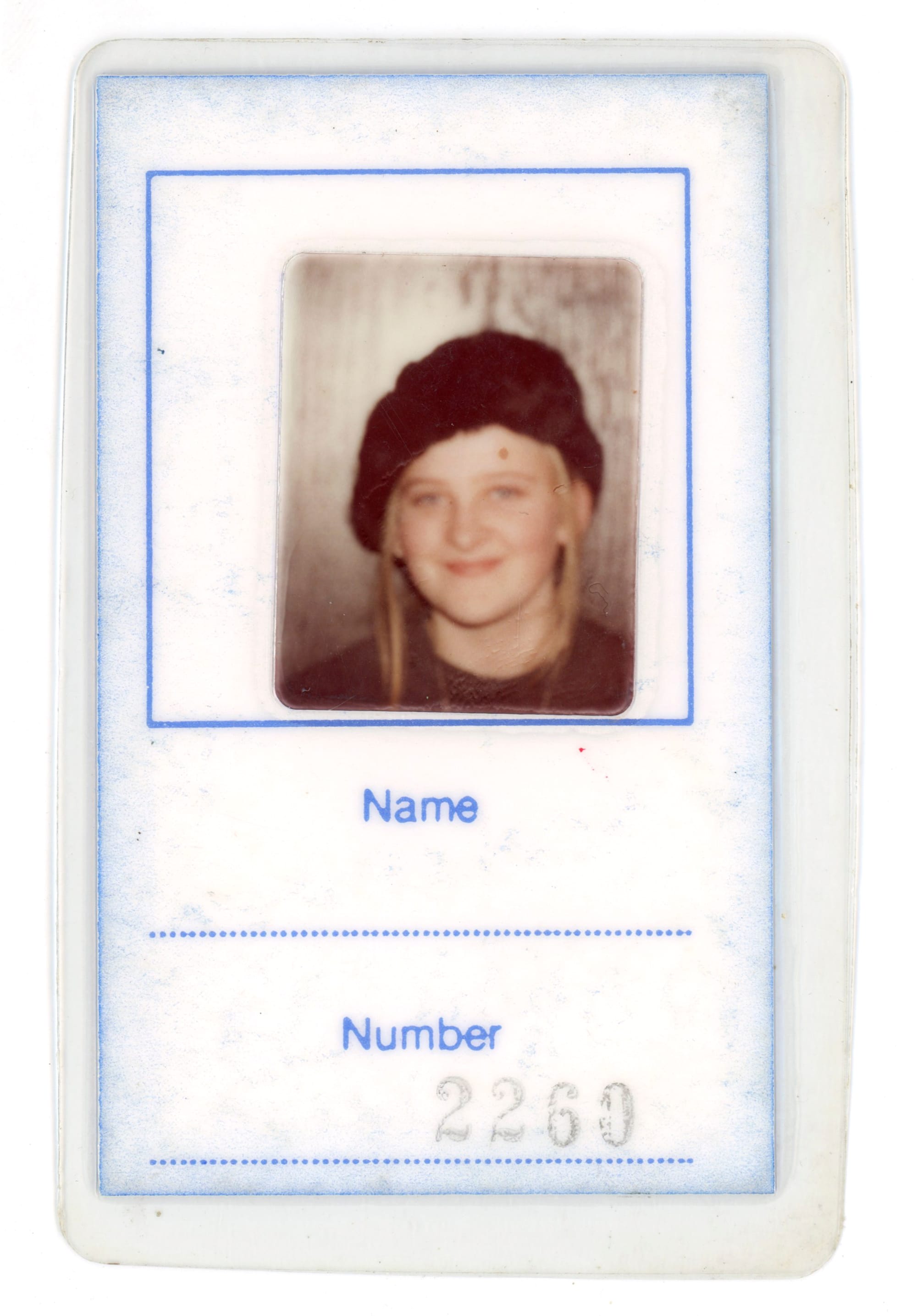
Membership cards for London's RAGE and Ophelia / Emma Warren
"We often lack the language to describe our relationship to place. There’s no word like ‘boyfriend’ or ‘girlfriend’ for the spaces we love. And yet, grassroots venues are loved, whether they’re nightclubs, youth clubs or multi-purpose cafés. People care about them for good reason. These are community spaces, regardless of whether they’re commercial or non-profit, and they deal in profound economies. By this I mean they create space for belonging. For me, as a teenager, one of those places was the nightclub Heaven, and the Thursday night club night called Rage way back at the end of the 1980s. The club is now considered to be one of the key locations for the emergence of the music known as jungle, later drum ‘n’ bass. I managed to hold on to my membership card over the years and it’s a reminder that there was once a time when there was space all over the city, where people could dance, make things or just hang out. We will have to fight hard to retain what is left and to create the space people want and need today. I'm always grateful to people who make grassroots venues happen: promoters, venue owners and audiences, too."
Emma Warren
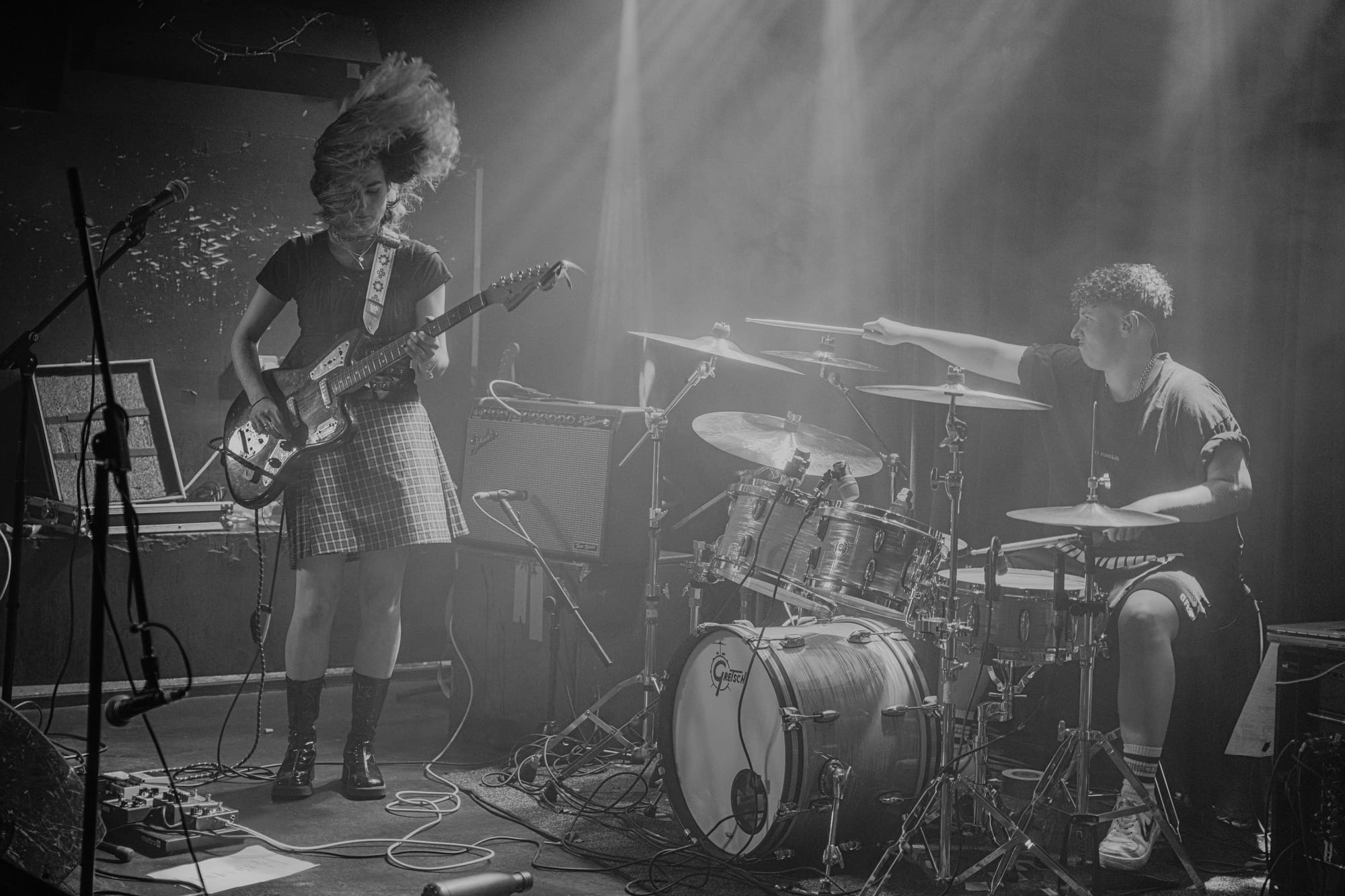
"The London grassroots music scene was not only where we cut our teeth as a band, playing small venues and becoming part of the ever growing community, but also how we met each other in the first place. Looking at other bands and how they presented themselves was a huge influence on us at the start. Today, art, fashion and music are deeply entwined for us more than ever before, even though our personal styles and influences have evolved to be very different. We’re at a point now where we dress very individually, read different books or visit different galleries, but it not mattering because we continue to find each other in our music. It's that combination of influences that defines our style as a band above anything else."
Just Kids
Museum of Youth Culture Archive
Browse a selection of images curated by the Museum of Youth Culture documenting London's independent music scene, alongside reflections from the photographers who captured them.
1980s: Two goths at club Blitz in London
Marc Morris / Museum of Youth Culture

"Since my days of clubbing and gigging which began in the late 1970s, London has sadly lost many of its small venues. It is vital that we champion upcoming music and youth culture by continuing London’s world renowned influence on the music and fashion industries by ensuring small clubs and music venues are able to continue to operate and champion new talent."
Marc Morris
1988: Ravers dancing outside 'the Trip' at the Astoria, London
Marcus Graham / Museum of Youth Culture
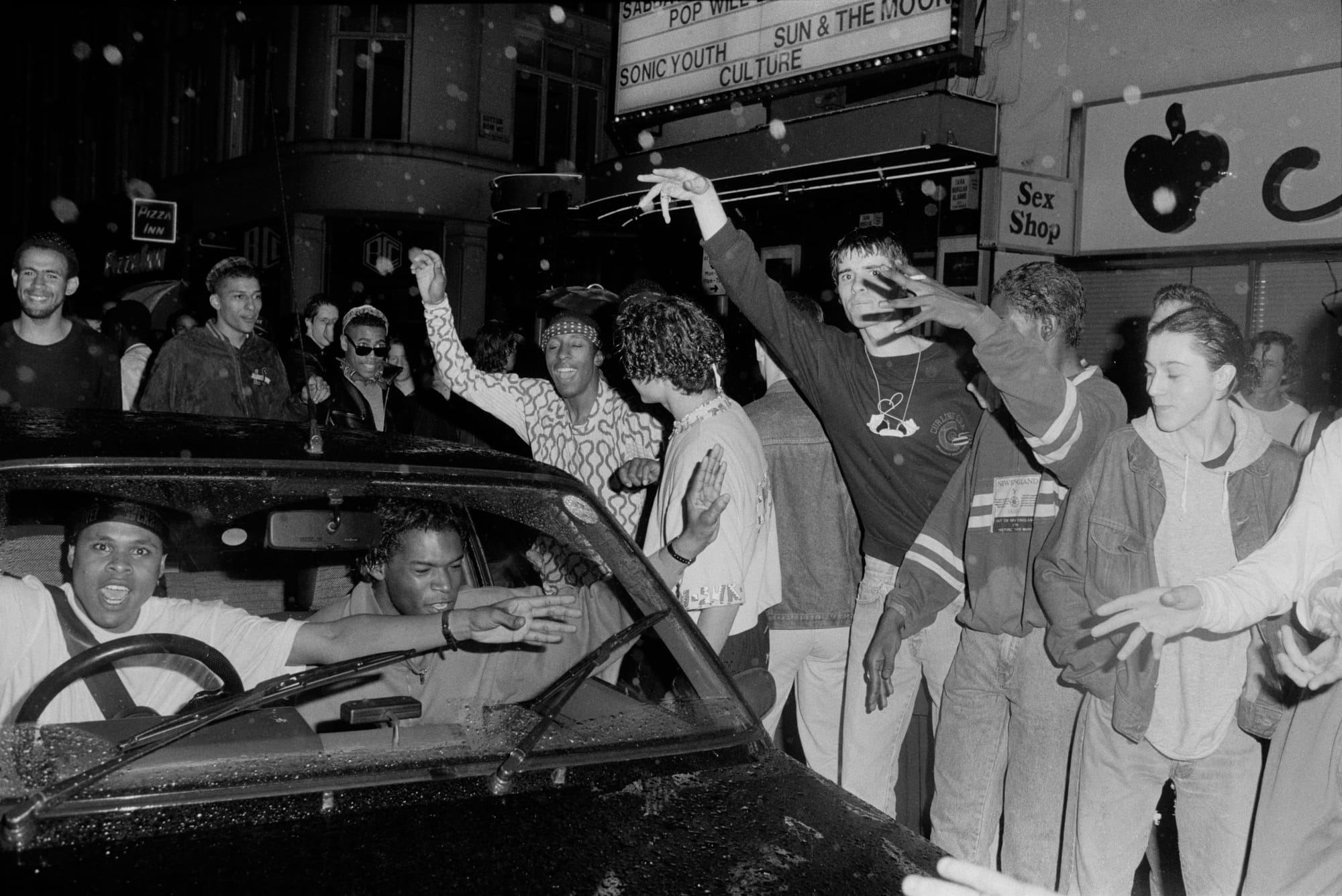
"Without those grass roots venues and the wonderful, warm and welcoming people around them I wouldn't be who I am today. I moved to London in 1987 for that very reason, to be able to be part of that (night) life and be myself among open and creative people. In 1988 Acid House united people from all over the world and from all walks of life dancing towards a better and brighter future, 'Can You Feel It' was and still is our anthem. Venues such as The Astoria or Legends or Gossips or The Limelight or The Fridge or Fire or Spiritlands or Dingwalls or The Big Chill or insert your favourites (otherwise I'll be going on for ages and ages... Heaven, Fabric, Busby's, Corsica Studios, Club UK, Ministry, The Egg, Turnmills to name a very, very few more and don't forget the pubs, one-off parties and other do's...) have a special place in our hearts and collective soul."
Marcus Graham
1989: Crowd at Dingwalls gets bum-rushed from the door before Ultramagnetic MC's hit the stage, London
Normski / Museum of Youth Culture

"Independent and small venues are a crucial life line to the ever growing culture creatives. Everyone has a story of where it all started for them from the biggest artists and groups across the board to designers, dancers and nightlife curators. Creative people need spaces to evolve and share what they do with the hungry community of people that all want to go to places that resonate with them and they can even regard as a second home and represent today's outgoing generation."
Normski
1990s: Ruby Venezuela, mid-show costume change, Madame JoJo's, Soho, London
Adam Friedman / Museum of Youth Culture
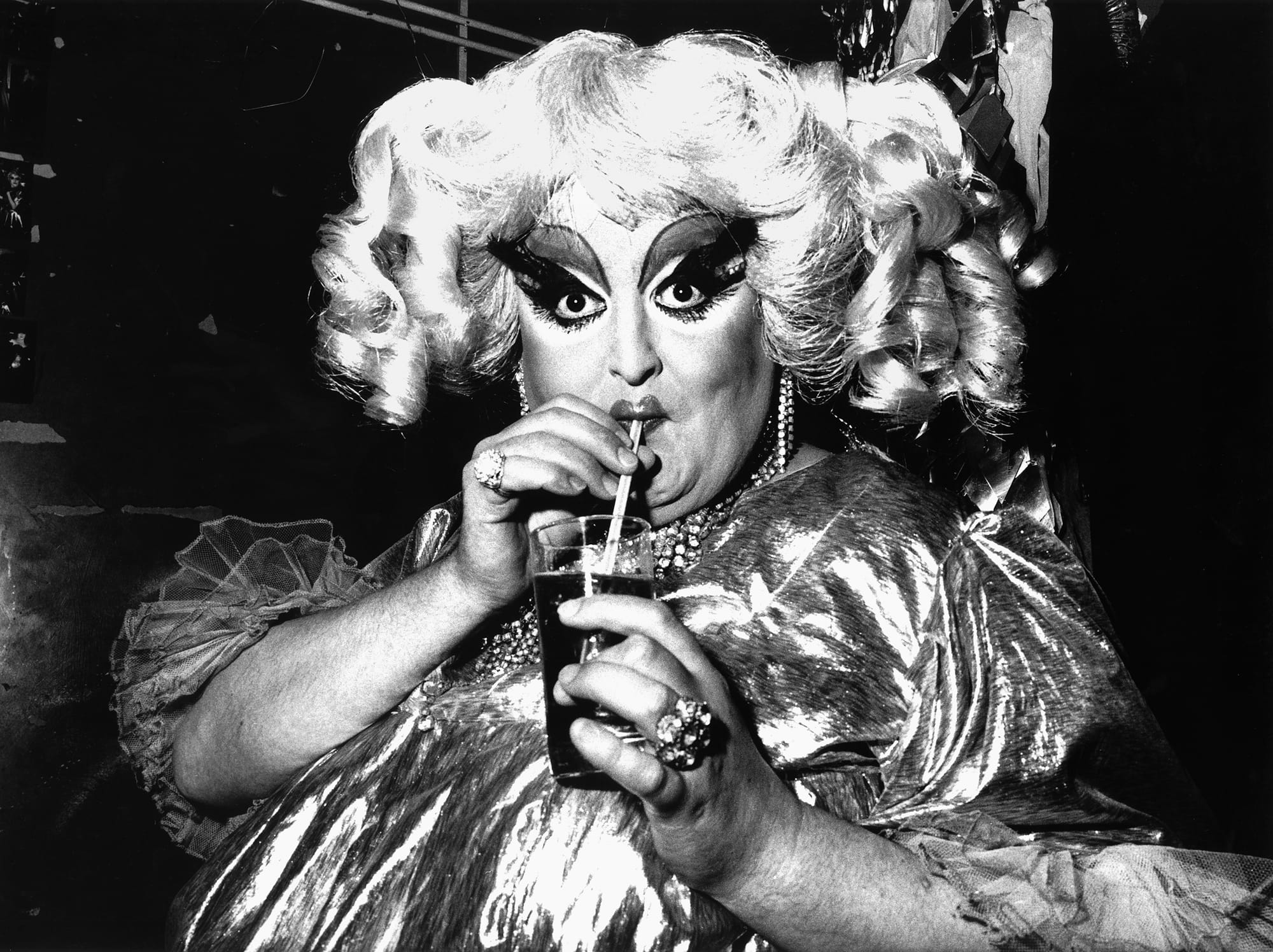
1994: Crowd at Desire, Roller Express, East London
Morgan Gibbons / Museum of Youth Culture
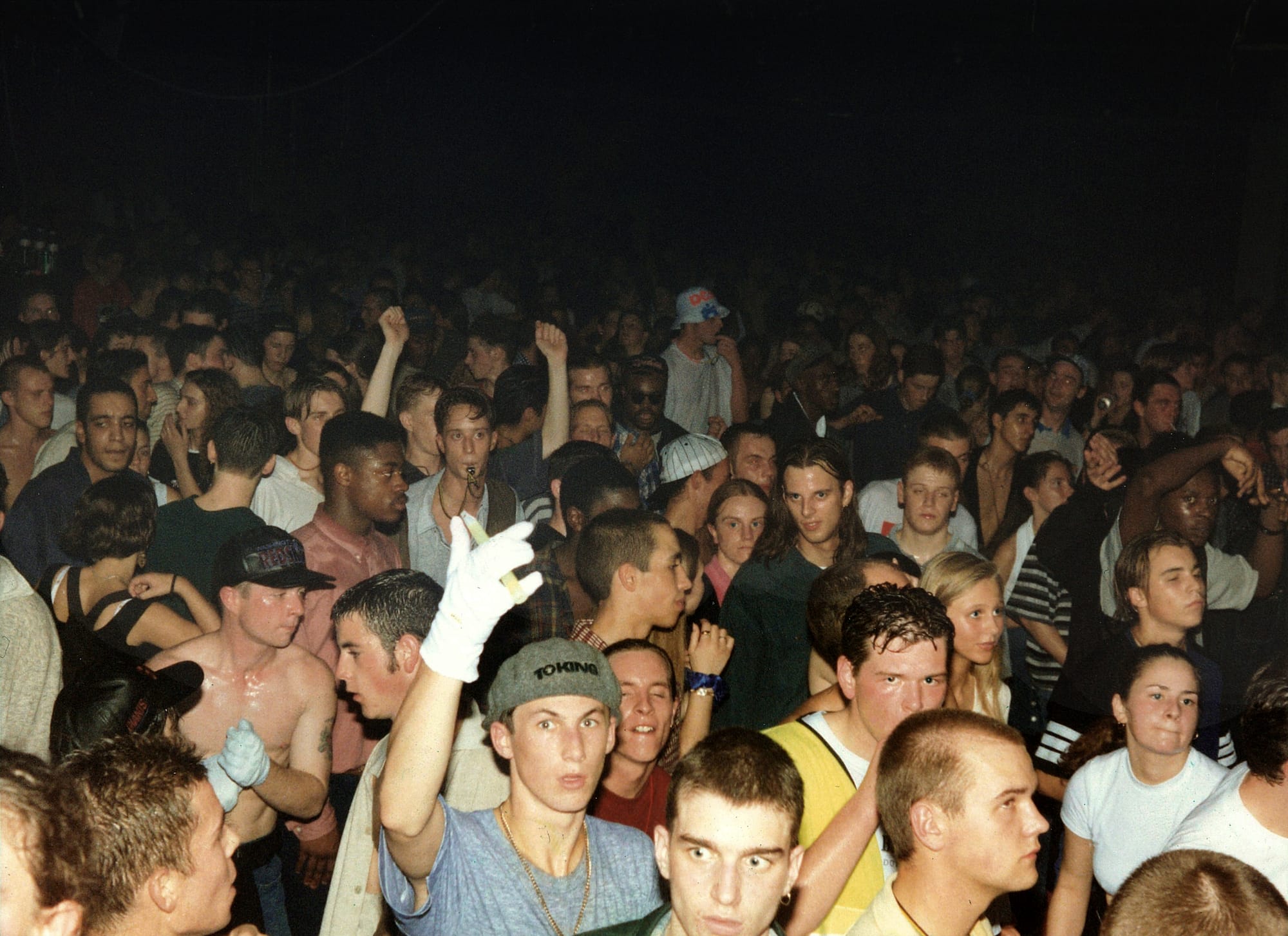
Companion Playlist
Check out our dedicated Spotify playlist of tracks chronicling emerging subcultures over the past 40 years in the UK capital, offering a snapshot of London's innovative and ever-evolving artistic youth comprised of local, national and international influences.
